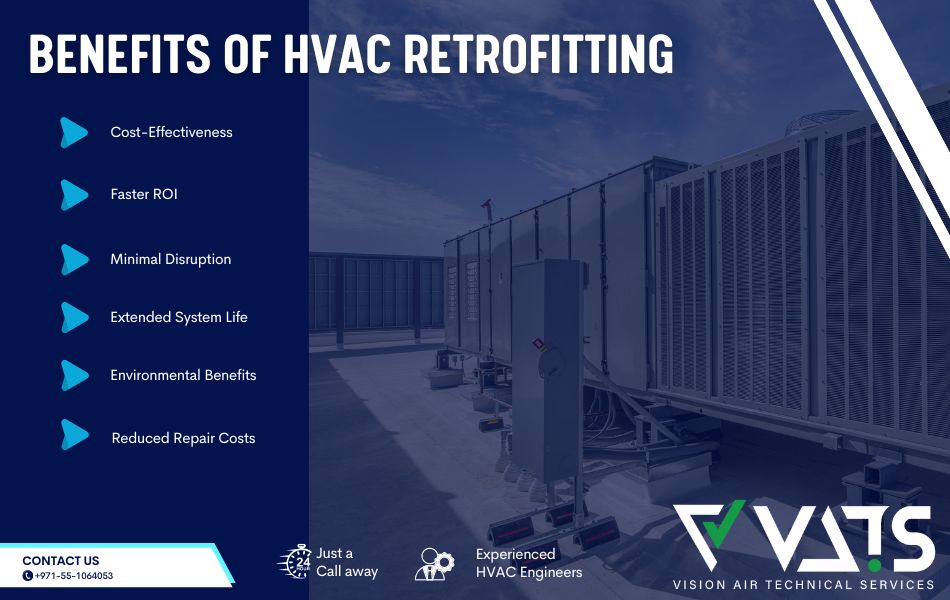Serices List
HVAC Retrofit: Enhancing Energy Efficiency
What is Retrofitting?
HVAC Retrofit refers to the process of upgrading existing HVAC systems in residential or commercial buildings with newer, more efficient components and technologies. The primary purpose of retrofitting is to improve energy efficiency, reduce operating costs, and minimize environmental impact.
Significance of Energy Retrofits
Energy retrofits play a crucial role in mitigating climate change by reducing greenhouse gas emissions associated with building operations. They also contribute to cost savings for building owners and operators, making them an attractive investment for sustainability-minded organizations.
The benefits of Retrofitting HVAC Systems and Equipment
- Quick return on Investment
- Reduced Repair Costs
- Energy Savings
- Increased Lifespan
- Better Air Quality and Comfort
The Importance of Commercial HVAC System Retrofits
Commercial HVAC system retrofits target heating, ventilation, and air conditioning systems, which typically account for a significant portion of a building’s energy consumption. By enhancing the efficiency of these systems, organizations can make substantial progress toward their sustainability goals, at the same time saving on expenses.

Benefits of Retrofitting Commercial HVAC Systems
Retrofitting offers numerous benefits, including reduced energy costs, lower maintenance expenses, and improved occupant comfort. It also aligns with corporate decarbonization goals, making it a strategic investment for forward-thinking companies.
To read more about the benefits click here.
Strategies for Energy Efficiency
Decarbonization Goals
One of the key strategies for enhancing energy efficiency is to align HVAC retrofits with corporate decarbonization goals. By investing in high-efficiency equipment and technologies, organizations can significantly reduce their carbon footprint and contribute to global efforts to combat climate change.
Technological Solutions
Technological advancements, such as VRV (variable refrigerant volume) VRF (variable refrigerant flow) systems and ground source heat pumps (GSHP), offer energy-efficient alternatives to traditional HVAC systems. Additionally, smart building technologies, including building automation systems (BAS) and energy recovery ventilation systems, can optimize energy usage based on real-time data.
Impact on Sustainability
Commercial HVAC system retrofits have a significant impact on sustainability by reducing energy consumption and greenhouse gas emissions. These retrofits not only benefit the environment but also improve operational resilience and occupant health and well-being.
Cost Considerations
While retrofitting offers long-term cost savings, the initial investment can vary depending on several factors. These include the type and complexity of the retrofit, building size, existing infrastructure, sustainability goals, and regulatory compliance requirements.
Factors such as the type of retrofit, size and complexity of the building, condition of existing infrastructure, and sustainability goals can all impact the cost of a commercial HVAC system retrofit. It’s essential for organizations to carefully consider these factors when planning retrofit projects. Our expert team will provide all the necessary information and guide you through the pros and cons, thus gearing you up to make the right decision.
Many organizations face capital expenditure constraints when considering HVAC system retrofits. However, delaying necessary improvements can lead to increased maintenance costs and compromised system reliability in the long run. It’s crucial for organizations to prioritize energy efficiency and sustainability despite short-term financial constraints.
Long-term Benefits vs. Short-term Costs
While the upfront costs of HVAC system retrofits may seem significant, the long-term benefits far outweigh the initial investment. By reducing energy costs, improving operational reliability, and enhancing occupant comfort, retrofit projects offer substantial returns on investment over time.
Evaluation of HVAC System for Retrofit
For an HVAC retrofit, it’s essential to collaborate with a certified HVAC contractor or engineer who can evaluate your current system. This allows them to gather the details needed to design a new system and manage the installation process effectively.
The cost of retrofitting an HVAC system varies based on the building’s size and complexity. However, many retrofits can be more cost-effective than a full replacement, with potential savings from improved energy efficiency and other benefits helping to offset the initial expense.
When assessing the performance of an HVAC system, several factors need to be considered. These include the system’s age, the building’s dimensions, the design and layout of the ductwork, and the type of equipment being used.
Steps for Evaluation
- Begin by examining the HVAC components, such as the air handler, condenser, and ductwork. Look for damage or signs of wear like leaks, rust, or cracks. Ensure the system is clean and debris-free, and inspect the air filters.
- Measure the airflow from registers and diffusers in each room, ensuring consistent and strong airflow. Weak airflow may point to issues with the ductwork or blower motor.
- Use a thermometer to check the air temperature from the registers and diffusers, ensuring it’s uniform throughout the building.
- Inspect the ductwork for air leaks, as these can decrease system efficiency and impact indoor air quality.
- If the system uses refrigerant, check its levels. Low refrigerant can reduce efficiency and increase energy costs.
- Review your energy bills and compare them with previous years. A rise in energy costs may suggest a problem with your HVAC system.
Evaluating an HVAC system requires a detailed review of its components and overall performance. Consulting with a professional HVAC technician can help ensure a thorough assessment and provide recommendations for upgrades to boost system efficiency and lower energy costs.
Get a Retrofit with Vision Air Technical Services
Vision Air Technical Services (VATS) offers innovative solutions for organizations looking to overcome capital expenditure constraints and achieve their sustainability goals. Our HVAC Retrofit service offering provides a cost-effective way to implement HVAC system retrofits while minimizing upfront costs and maximizing long-term benefits.

